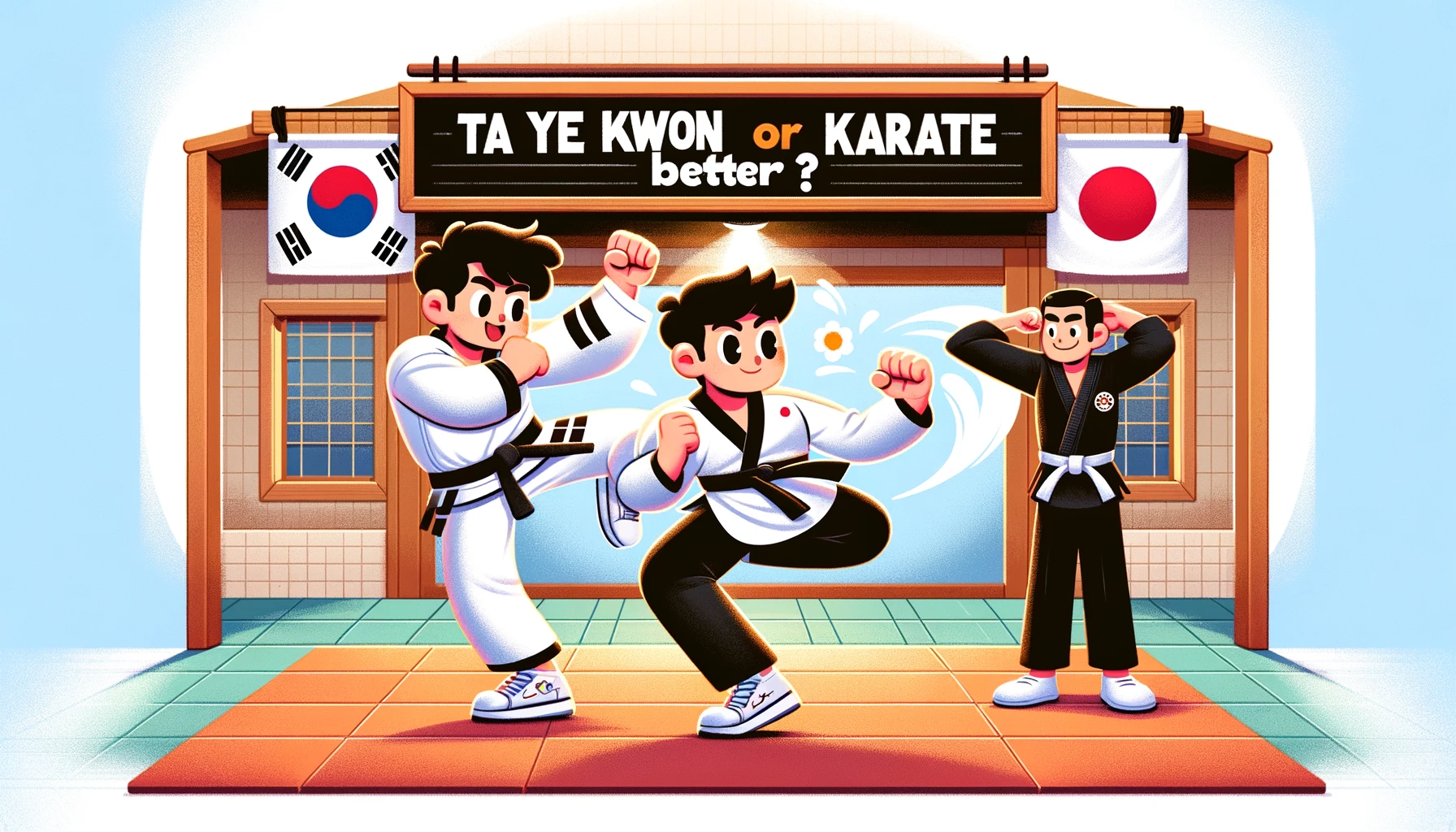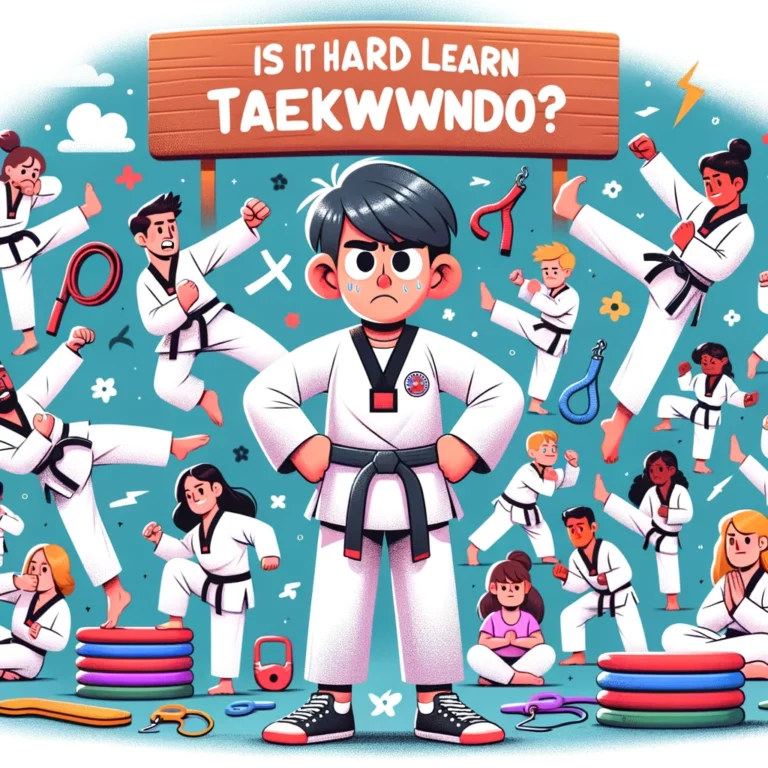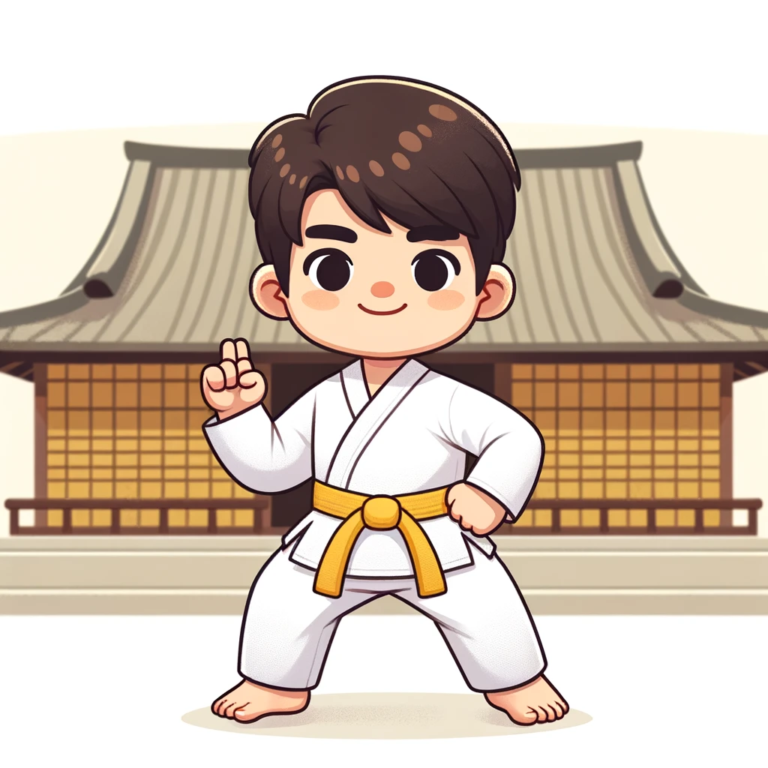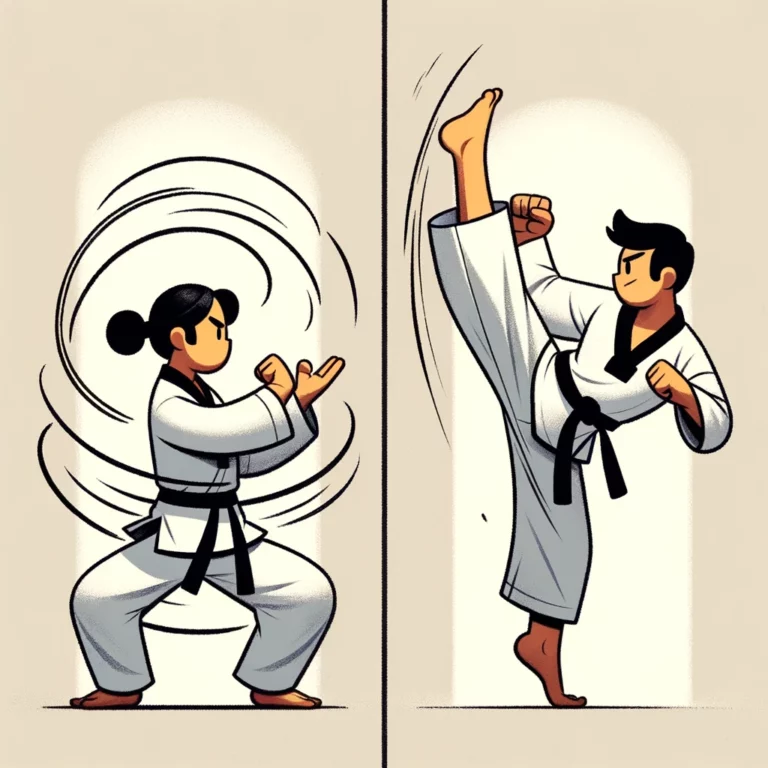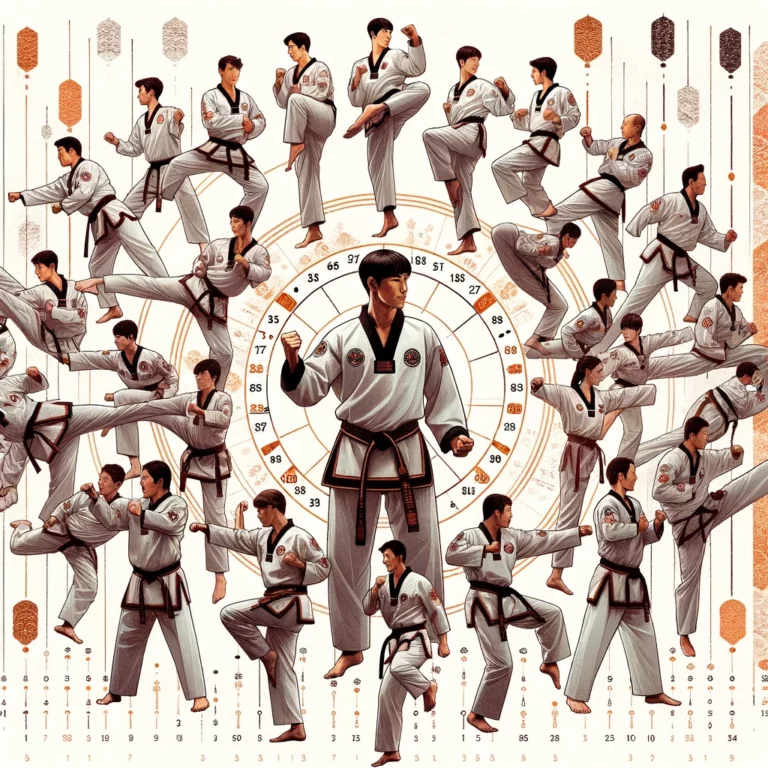Is Tae Kwon Do or Karate better? The answer depends on your personal goals and preferences, as martial arts offer unique benefits and philosophies.
Origins and History
One of the most fascinating aspects of martial arts is their diverse origins and rich historical backgrounds. Each martial art has unique beginnings, often rooted in ancient cultures and traditions. For example, Karate originated in Okinawa, Japan, and can be traced back to the indigenous fighting systems of the Ryukyu Kingdom. On the other hand, Taekwondo, which has become synonymous with Korean martial arts, was developed in South Korea shortly after the end of World War II. These distinctive origins highlight martial arts’s geographical and cultural influences and contribute to each discipline’s unique techniques and philosophies.
Aside from their geographical origins, martial arts also have interesting historical stories. For instance, kung fu, with its roots in ancient China, has a long history that spans thousands of years. Legend has it that kung fu was initially developed by the monks of the Shaolin Temple as a means of self-defence and spiritual cultivation. Over time, it evolved into a complex system of techniques and forms, becoming an integral part of Chinese culture. Similarly, Brazilian jiu-jitsu originated in the early 20th century when Mitsuyo Maeda, a Japanese judo master, migrated to Brazil and taught his techniques to the Gracie family. This began a new martial art focused on ground fighting and leverage, eventually gaining worldwide recognition and popularity.
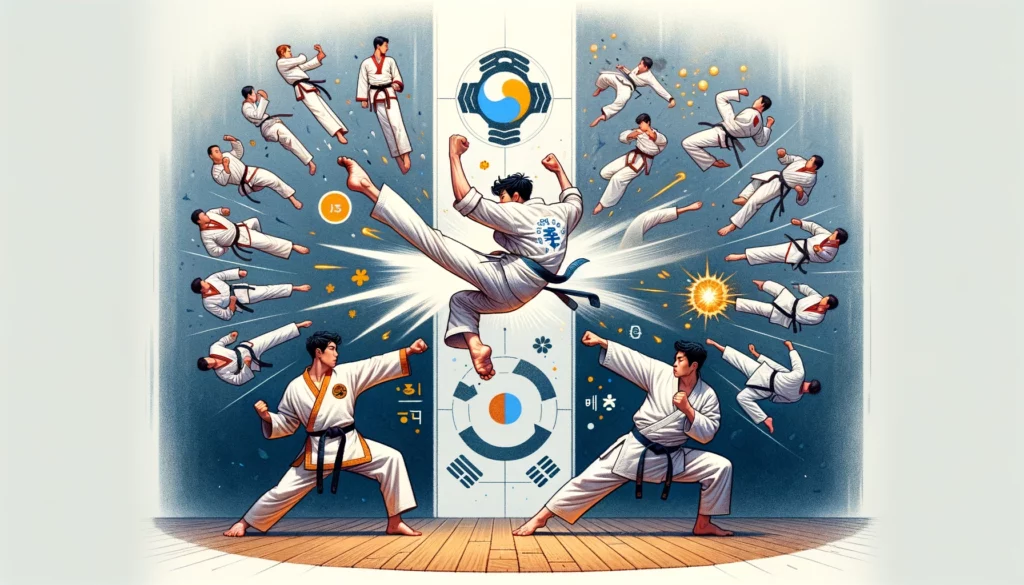
Critical Differences in Tae Kwon Do and Karate Techniques
Tae Kwon Do and Karate are distinguished and respected martial arts with unique techniques and philosophies. One of the key differences lies in their striking techniques; Tae Kwon Do emphasizes head-height kicks, jumping spinning kicks, and fast kicking techniques. It is known for its dynamic footwork and spectacular high kicks, reflecting its origin in Korea, where agility and leg strength were prized. In contrast, Karate, originating in Japan, focuses more on hand techniques, including punches, hand strikes, and elbow and knee strikes. Karate’s stances are generally deeper and firmer, and the movements are more linear compared to the more fluid and circular movements in Tae Kwon Do. Furthermore, Karate incorporates substantial body conditioning, strengthening the practitioner’s ability to absorb hits, whereas Tae Kwon Do emphasizes speed and agility to avoid strikes. These distinctions contribute to the unique tactical approaches, forms (known as kata in Karate and Poomsae in Tae Kwon Do), and philosophies inherent in each art form.
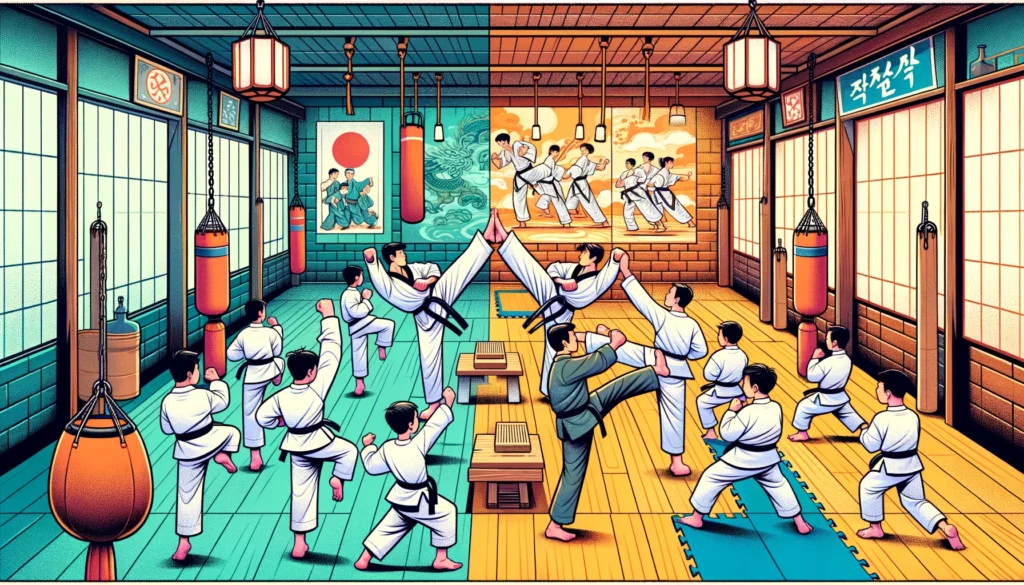
Training and Discipline
The training and discipline in different martial arts styles vary greatly, with each style having its unique approach and focus. For instance, in Brazilian Jiu-Jitsu (BJJ), the emphasis is on grappling, ground fighting, and submission holds. BJJ practitioners undergo rigorous training sessions that involve techniques specific to these aspects, such as various holds, locks, and chokes. The training often includes partner drills and sparring, allowing practitioners to apply these techniques in a controlled setting and develop their skills in real-life situations.
On the other hand, in Karate, training and discipline revolve around striking techniques, defensive moves, and forms (katas). Karateka (karate practitioners) dedicate themselves to perfecting punches, kicks, knee strikes, and elbow strikes. The training involves repetitive practice of these techniques to build speed, precision, and power. Additionally, Karate emphasizes discipline and respect towards instructors and fellow practitioners, as these values are essential to personal growth and mastery of the art.
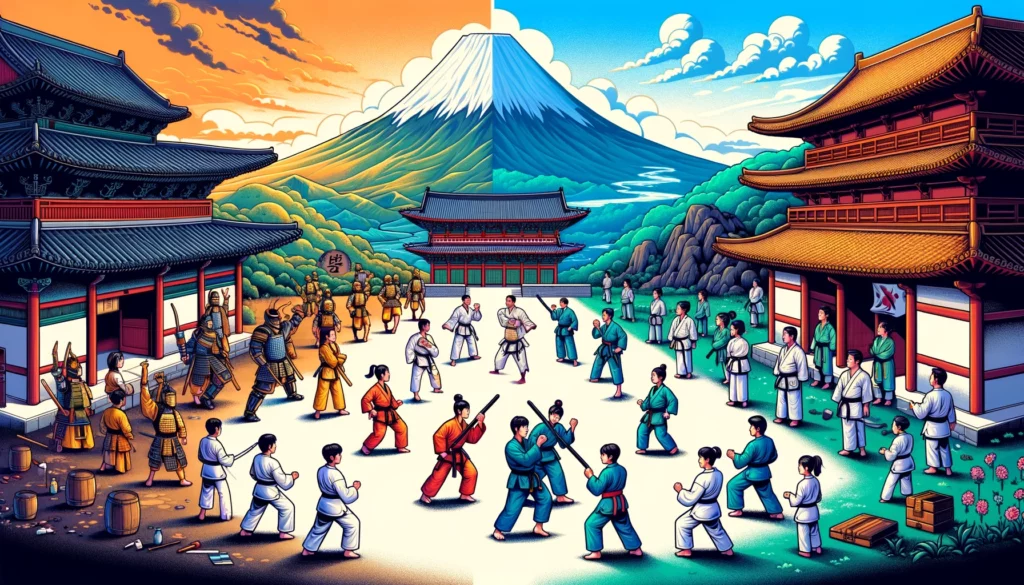
Philosophical Differences
While martial arts disciplines may share similar techniques, training methods, and competitive goals, inherent philosophical differences set them apart. These philosophical differences can significantly influence the mindset and approach of practitioners.
One key distinction lies in the concept of balance. Kung Fu emphasizes cultivating physical and mental harmony, seeking to achieve a state of equilibrium between body and mind. The philosophy of Kung Fu centres around the idea that true power and effectiveness can only be accomplished by unifying oneself’s physical, mental, and spiritual aspects. This holistic approach emphasizes the importance of self-discipline, introspection, and self-control, emphasizing the balance and harmony of one’s inner and outer self.
On the other hand, Karate emphasizes efficiency and force more. Its philosophy revolves around the concept of maximum effectiveness with minimal effort. Karate practitioners seek to improve their techniques and power through rigorous physical training, focusing on precise strikes, blocks, and kicks. The goal is to deliver powerful blows swiftly and accurately to hinder the opponent as efficiently as possible. This philosophy values directness, intensity, and the ability to adapt to different situations swiftly.
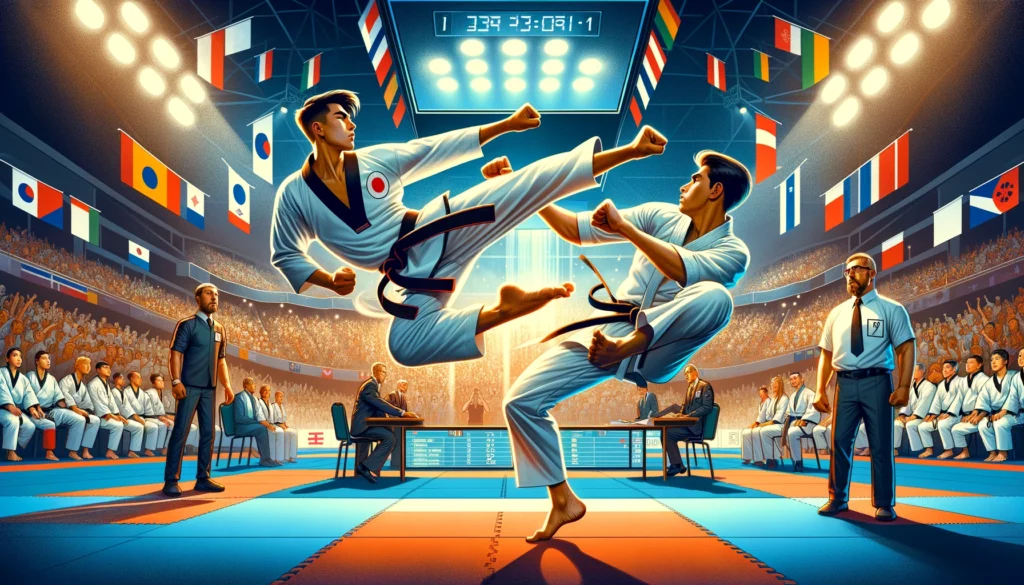
Competitive Aspects and Styles
In competitive martial arts, various aspects and styles set different disciplines apart. One key factor influencing these arts’ competitive aspect is the scoring system. Each discipline has its unique way of determining winners and losers based on specific criteria. For example, in Brazilian Jiu-Jitsu, points are awarded for techniques such as takedowns, sweeps, and submissions. On the other hand, in Taekwondo, points are earned through well-executed strikes and kicks to designated target areas. These scoring systems showcase competitors’ strengths and abilities and test their strategic thinking and adaptability during matches.
In addition to the scoring systems, another crucial aspect of competitive martial arts is the different styles practitioners adopt. Each discipline has distinctive techniques, forms, and philosophies that shape how competitors approach their matches. For instance, in Muay Thai, an ancient martial art from Thailand, fighters use a combination of punches, kicks, elbows, and knee strikes to overpower their opponents. Meanwhile, competitors in fencing, a more modern martial art, rely on precise footwork and swift swordplay to score points. These distinct styles add diversity and excitement to martial arts competitions and provide a framework for athletes to showcase their mastery of their chosen discipline.
While the competitive aspects and styles of martial arts may vary greatly, they all share the goal of testing the practitioners’ skills, abilities, and mental fortitude. Whether grappling on the mat in Brazilian Jiu-Jitsu or engaging in lightning-quick exchanges in boxing, the essence of competition lies in pushing oneself to the limit and striving for victory. Each aspect and style brings challenges and rewards, attracting individuals with different strengths and aspirations. Ultimately, these athletes’ passion and dedication breathe life into the competitive martial arts world.
What is the origin and history of competitive aspects and styles?
The competitive aspects and styles have been prevalent in various sports and martial arts forms for centuries. Different cultures and regions have developed unique styles, techniques, and philosophies.
What are the critical differences in techniques among different competitive aspects and styles?
The critical technique differences lie in each style’s specific movements, strikes, and strategies. For example, boxing focuses on punches and footwork, while Brazilian Jiu-Jitsu emphasizes grappling and submissions.
How do training and discipline differ across different competitive aspects and styles?
Training and discipline methods can vary significantly. Some styles emphasize rigorous physical conditioning, while others prioritize mental discipline and meditation. The training methods also depend on the goals and requirements of each specific style.
What are the philosophical differences between different competitive aspects and styles?
Philosophical differences can range from focusing on self-defence, personal development, spiritual growth, or competitive excellence. Some styles emphasize discipline, respect, and humility, while others prioritize aggression, speed, and power.
What are the competitive aspects and styles that exist within the realm of martial arts?
There are numerous competitive aspects and styles in martial arts, such as boxing, Muay Thai, Karate, Taekwondo, judo, wrestling, Brazilian Jiu-Jitsu, and many others. Each style has its own unique rules, techniques, and competitive formats.

